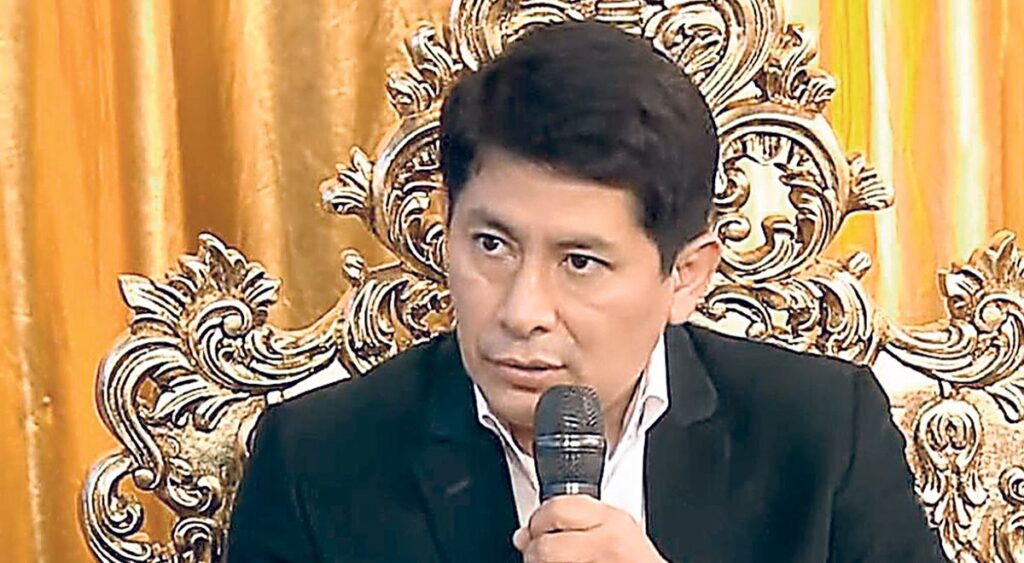Sunak, one of the two senior officials who precipitated the government crisis this week with his resignation, announced on Twitter that he would seek to be the next head of the Conservative Party and prime minister.
“Confidence must be restored, the economy rebuilt and the country united,” he wrote.
Sunak, 42, the first Hindu to hold the post of UK finance minister, resigned on Tuesday – around the same time as his Health colleague, Sajid Javid – triggering the crisis that led to Johnson’s resignation on Thursday at party front.
Deputy Tom Tugendhat, chairman of the parliamentary committee on Foreign Relations, and Attorney General Suella Braveman also ran.
A YouGov cabinet poll of Conservative voters put Defense Secretary Ben Wallace and Secretary of State for International Trade Penny Mordaunt among the favourites.
However, none of them have made their participation in the race to become Downing Street’s next tenant official so far.
Johnson announced that, in the face of unbearable internal pressure, he was resigning from the leadership of the government formation, and that he would remain at the helm of the Executive until his formation holds internal elections in the summer.
Whoever is elected will automatically become prime minister until the next legislative elections, scheduled for 2024.
– Called to leave now –
But that path is strewn with obstacles, given that some conservatives are asking him to leave now, to begin reversing the image damage that the scandals caused his party. And the Labor opposition calls for early elections.
Former Conservative Prime Minister John Major called Johnson’s stay in office “untenable” and suggested that Deputy Prime Minister Dominic Raab act as interim prime minister.
But the Downing Street spokesman ruled out this possibility on Friday, reaffirming that Johnson “remains prime minister until there is a new party leader” and indicated that “the work of the government will continue until that happens”.
If the conservatives do not immediately expel Johnson, the Labor Party will raise a motion of censure against the Executive, indicated the number two of that political force, Angela Rayner.
Johnson “is a proven liar, steeped in corruption and we can’t live with this for two more months,” Rayner told the BBC.
But to bring down the government, Labor would need the support of dozens of Conservative MPs. And even the most rebellious would distrust this maneuver to precipitate early elections that would now be very detrimental to them.
– Failed to resist –
Johnson fiercely resisted calls for him to resign for days.
But he ended up giving up on Thursday, when some 60 members of his government had already resigned in a bloodletting that began on Tuesday with the departure of Sunak and Javid.
The crisis precipitated hours after Johnson acknowledged his “mistake” in appointing Chris Pincher to an important parliamentary position, forced to resign accused of sexual abuse of two men, one of them a deputy.
After stating the contrary, Downing Street acknowledged that the Prime Minister was informed in 2019 of previous accusations against Pincher, but that he had “forgotten” them.
For a few months, the controversial prime minister had managed to make the scandals that surrounded him forget thanks to his determination to support Ukraine against the Russian invasion.
But in early June, he faced a vote of no confidence from his own MPs. He survived thanks to the support of 211 of his 359 legislators, but the 148 votes against him made it clear that discontent did not stop growing.
Several electoral setbacks, the latest in two midterms on June 23, convinced a growing number of conservatives that Johnson could no longer lead them into the next legislative.
Champion of the 2019 elections, when he achieved the most important conservative majority in decades thanks to the promise of Brexit, the prime minister has been falling in the polls for months amidst numerous scandals, led by the illegal parties organized in Downing Street during the 2020 and 2021 lockdowns.


















